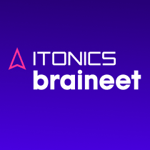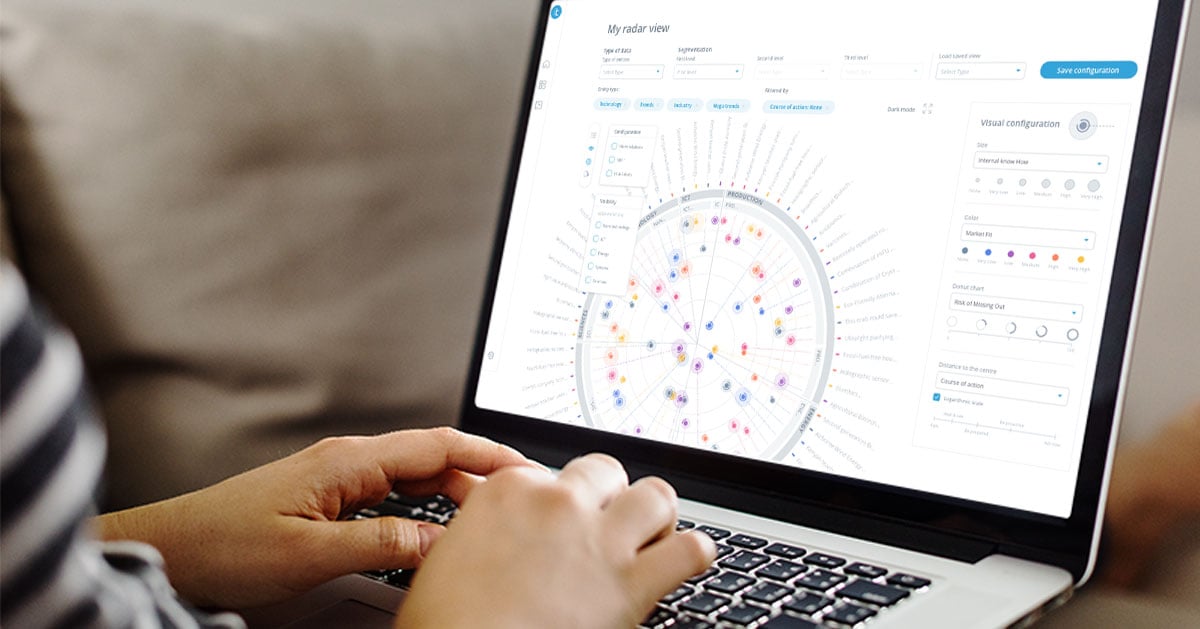Way too often large corporations with teams of strategists fail to spot emerging trends and act upon them. Despite the abundance of resources and employees with full-stack competencies, they neglect the change on the horizon. Why is that?
A corporate early warning system is a systematic approach that anticipates the upcoming disruption and actively seeks weak signals and emerging trends.
Want more insights around trend detection at Intel? Then listen to our Innovation Rockstars podcast, in which we talked to John Miranda, Director of Strategy Office, Data Center, and the AI group at Intel Corporation, about corporate foresight.
Intel Corporation is successfully leveraging an early warning system for emerging trends. The company is using AI strategies, focusing on AI-enabled signal detection and trend evaluation to influence investment decisions and meet the future expectations of its customers. The company employs a three-tier framework: Sensing, Interpreting, and Acting to contextualize AI.
Sensing: How to Spot the Most Relevant Trends?
Intel has a global early market and technology sensing function that informs the decisions of its executives and corporate strategy office. This function focuses chiefly on the Sensing phase to run Intel’s AI-powered program called Trendscape. Trendscape is used for automated signal and trend detection. With a custom-designed synergy of AI-enabled algorithms, Community, and Software, all aimed in unison at solving the needs of Intel’s clients, Trendscape pushes the company towards a more data-driven decision making.
AI-enabled algorithms: AI-enabled algorithms generate automated queries and monitor high volume time-series input such as news reports, academic research, investment trends. Thus, Trendscape monitors approximately 30-50 key signals at a time. The company’s community then discovers the identified unknowns and amplifies the sensitivity to them by analyzing billions of source materials.
Community: Intel taps into employees across different departments globally and partners with domain expertise, including product developers, Intel Labs, sales, and marketing employees to unearth insights and evaluate key trends impacting Intel's future growth. This enables the company to engage key groups of motivated and capable individuals to filter out potential business opportunities and threats.
Software: Intel developed a market and technology foresight system powered by ITONICS Trend Radar to collect, communicate, and connect the dots. By enabling one-click addition of signals and the ability to assign them to trends, the software helps Intel keep signals organized and, thus, provide a holistic overview of what is happening.
Interpreting: What Do the Spotted Signals Mean?
Going beyond Sensing, companies need to interpret the AI-assisted signal discoveries. At this stage Intel faces a key limitation of AI tools — they cannot do the thinking on their own.
Challenge: Intel’s team identified rising complexity around data privacy and sovereignty, including important global trends such as China’s Social Credit System or concerns over the ethics of AI. Although AI helps Intel amplify and sense signals, it won’t do the thinking required to connect these complex dots.
Solution: After sharing the trends with Intel’s Data Center Group, which resonates with the signals, the team conducts an in-depth market scan by engaging the strategic architects from relevant business units. The final benefit is the integration of new features designed to shape the product roadmap.
Impact: An early warning system of emerging trends can influence the future of Intel’s products. AI plays a part in it, but it is just a tool to drive real business impact.
Another way to tackle the limitation of AI-produced insights is the generation of plausible future scenarios. When creating these, Intel is looking for ways of filling the gap between the available technologies and the drivers of markets, societies, or governments. By understanding the job-to-be-done or the market need to be fulfilled, Intel is then capable of connecting the technology used with the acute societal need or governmental requirement.
Acting: How to Get People to Act Upon the Derived Insights?
None of the above matters, if the executives you are reporting to are not listening. Given that they are by default subject to numerous pleas of action, especially with regard to the latest trends and opportunities, there is a lot of noise associated with decision-making. Sensing (by AI) and Interpreting (by the community) are one part of the story. Acting - convincing people to commit to doing something is the other (even harder) part. Think of it as the 70:20:10 rule of AI: 10% is sensing; 20% is interpreting; 70% is convincing, talking, and getting people to act.
The end goal in the corporate setting is to drive action with the leadership and accomplish an investment decision. To get there, Intel evaluates where it stands in regards to the key stakeholders who need to be on board. One of the tools that help Intel in stakeholder management is the Driving Action with Leadership model allowing for self-assessment of the degree of involvement one has with relevant stakeholders.
There are 5 major stages of a relationship with business partners starting with ''Irrelevant'' and ending with ''Full Partner'' status. Whatever size your organization is, there are some stakeholders who don’t even know about you. In case you need their support, a good starting point is reflecting on where you are currently situated in this range of involvement and moving towards the desired status.
In a nutshell, aiming to predict what is the next big thing, where to invest, how to meet the future expectations of Intel’s clients, and how to expand Intel’s competitive edge, the company follows a three-step approach to contextualize AI; Sensing, Interpreting and Acting. Intel leverages AI tools to find emerging trends, interpret them with internal, and crowd-sourced expertise and act upon implications to drive tangible business impact.










